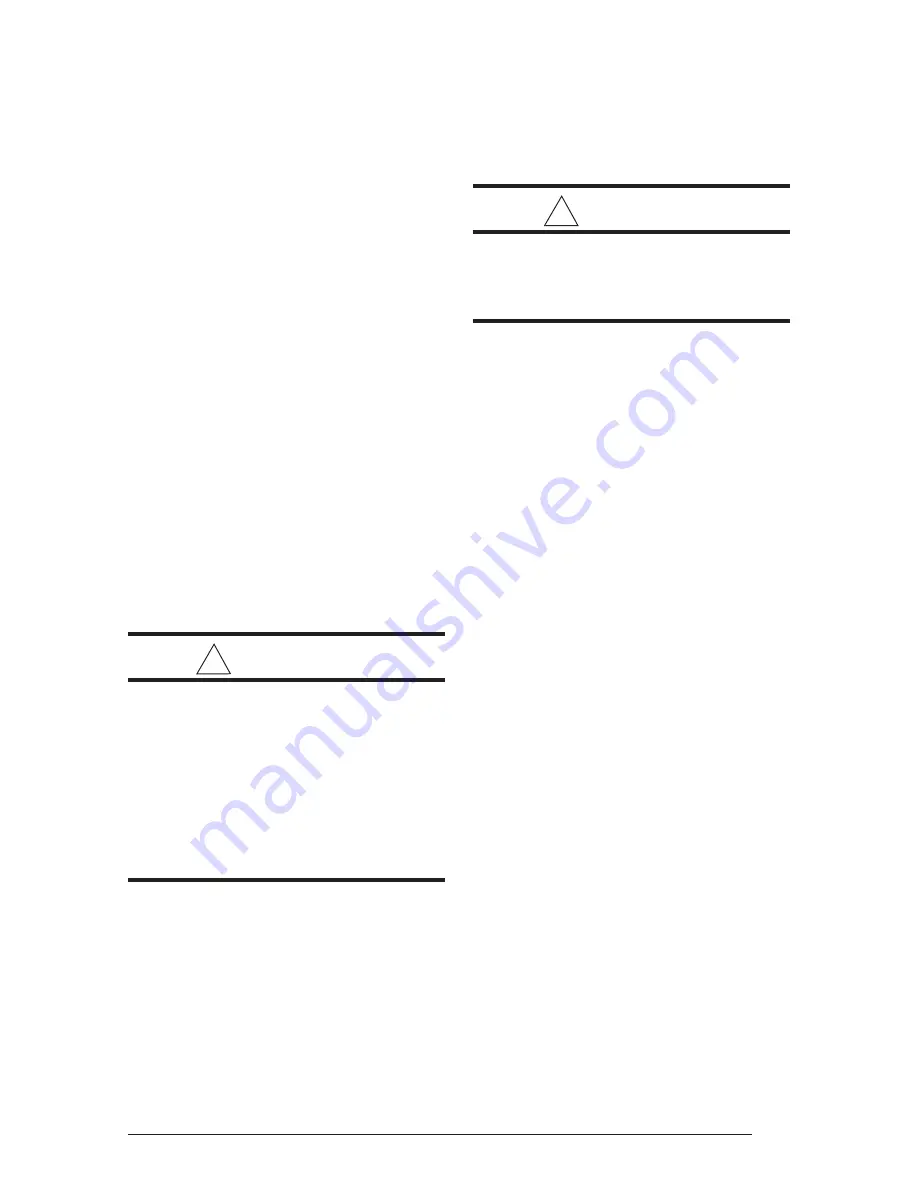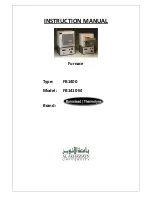
37
Filters for side return and bottom return appli-
cations are available from your local distribu-
tors.
Lubrication
The bearings in the circulating air blower motor
and inducer blower used in these furnaces are
pre-lubricated and sealed at the factory. No
further oiling of the bearings is required for the
life of the motor.
Blower Compartment
The blower compartment should be cleaned
monthly during the heating and cooling seasons
to remove any dirt and lint that may have
accumulated in the compartment or on the
blower and motor. Dirt and lint can create
excessive loads on the motor resulting in higher
than normal operating temperatures and short-
ened service life.
Heat Exchanger and Burner Maintenance
The furnace should operate for many years
without soot buildup in the flue passageways,
however, the flue passageways, the vent sys-
tem, and the burners should be inspected and
cleaned (if required) by a qualified serviceman
annually to ensure continued safe operation.
Particular attention must be given to identify
deterioration from corrosion or other sources.
! WARNING:
Holes in the vent pipe or heat exchanger
can cause products of combustion to
enter the home. Replace the vent pipe or
heat exchanger if leaks are found. Failure
to prevent products of combustion from
being circulated into the living space can
create potentially hazardous conditions
including carbon monoxide poisoning
that could result in personal injury or
death.
Cleaning Of Flue Passages
If the flue passages must be cleaned, follow the
steps below. See Figure 36 for component
location and identification.
1. Shut off the gas supply to the furnace either at
the meter or at the manual valve in the gas
supply piping.
2. Turn off all power to the furnace and set
thethermostat to the lowest temperature
setting.
3. Remove the louvered door from the furnace.
4. Turn the gas control lever to the OFF position.
5. Disconnect the wires from the gas valve,
igniter, flame sensor, combustion air motor,
flame roll-out switch, blocked vent switch, over-
temperature limit switch, pressure switch.
! CAUTION:
Label all wires prior to disconnection
when servicing controls. Wiring errors
can cause improper and dangerous op-
eration.
6. Remove the silicone rubber tube from the
collector pan.
7. For *TA upflow models: Remove the screws
that hold the vent control assembly to the top
panel.
8. Remove the nuts that hold the combustion air
motor to the collector pan, and remove the
complete combustion air blower and combus-
tion tube assembly.
BE CAREFUL NOT TO
BREAK THE SEALS AT EACH END OF THE
COMBUSTION AIR TUBE.
9. Remove the screws that hold the collector pan
in place, and remove the collector pan from the
furnace.
10. Using wrenches, separate the ground-joint
union in the gas supply piping at the furnace.
11. Remove the piping between the gas valve and
the ground-joint union, if necessary.
12. Remove the screws that hold the burner as-
sembly in place and remove the burner
assembly.
BE EXTREMELY CAREFUL NOT
TO DAMAGE THE IGNITER WHILE RE-
MOVING THE BURNER ASSEMBLY.
13. The furnace heat exchanger tubes can now be
cleaned by the use of a round wire brush
attached to a length of high grade stainless steel
cable, such as drain cleanout cable. Attach
variable speed reversible drill to the other end
of the spring cable. Slowly rotate the cable with
the drill and insert it into the top portion of the heat
exchanger. While reversing the drill, work the
cable in and out several times to obtain sufficient
cleaning. Repeat this sequence for each heat
exchanger tube.
14. When all heat exchanger tubes have been
cleaned, any debris inside the tubes can be
removed with the nozzle of a vacuum cleaner.
15. With a light, check the condition of the upper and
lower sections of the heat exchanger tube.
16. Inspect the burners and clean them (if neces-
sary) with a soft wire brush and/or the nozzle
Summary of Contents for TA-060C-08A
Page 2: ...2...




































